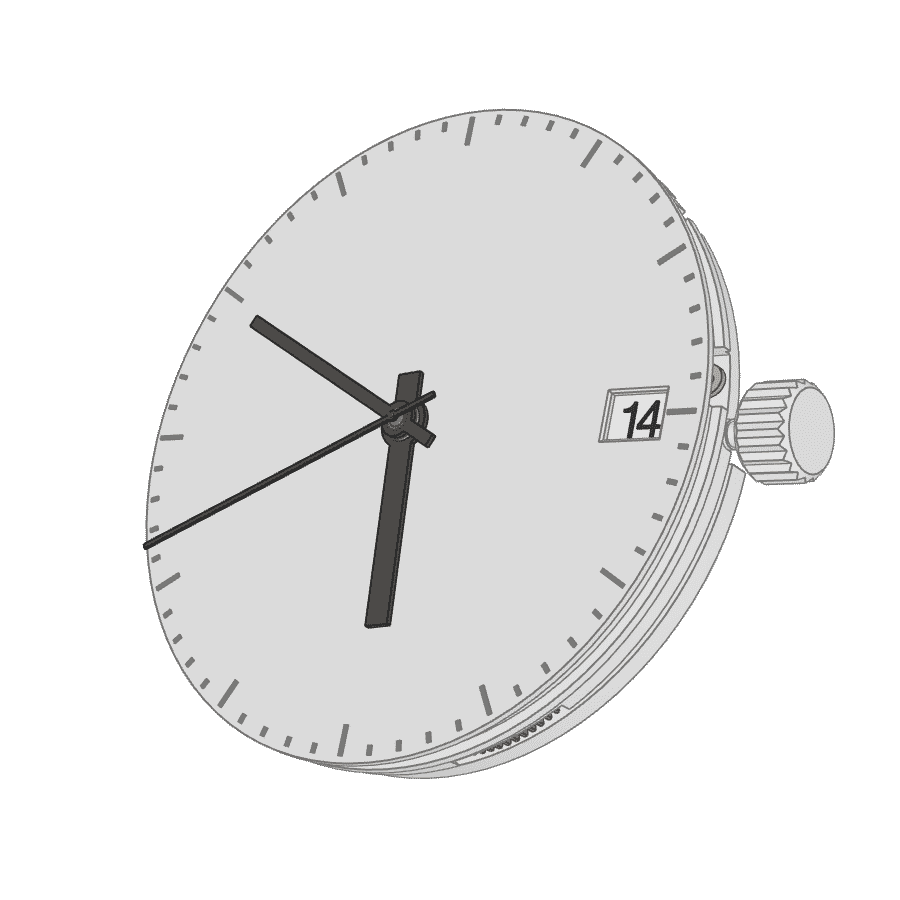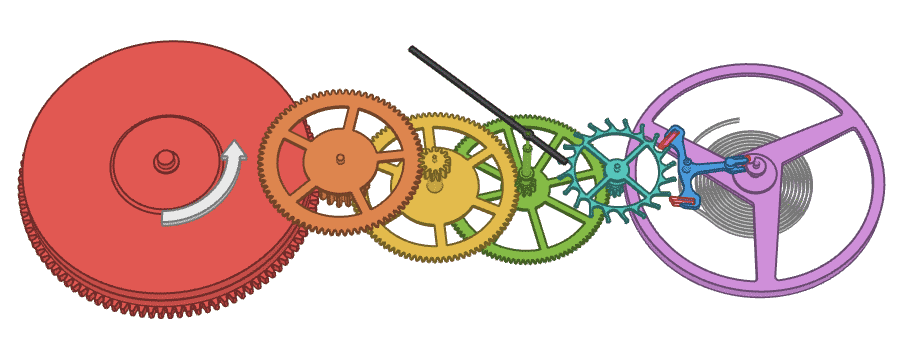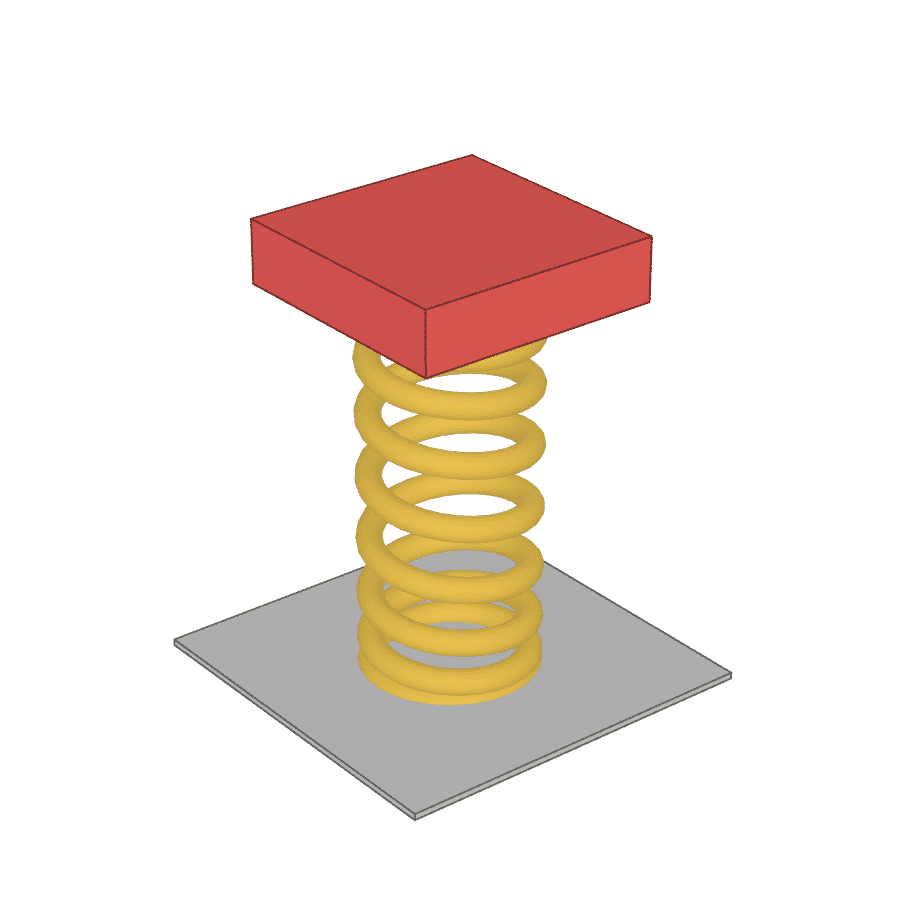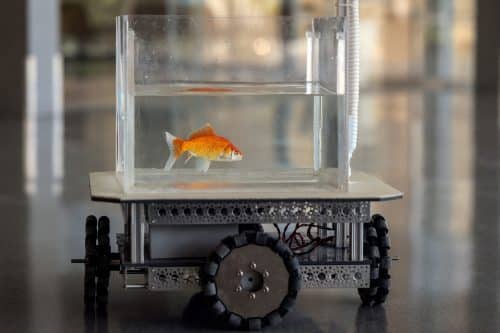In the world of modern portable devices, it may be hard to believe that merely a few decades ago the most convenient way to keep track of time was a mechanical watch. Unlike their quartz and smart siblings, mechanical watches can run without using any batteries or other electronic components.
Over the course of this article I’ll explain the workings of the mechanism seen in the demonstration below. You can drag the device around to change your viewing angle, and you can use the slider to peek at what’s going on inside:

What you see here is known as the movement – the inner part of a mechanical watch that’s usually enclosed in a metal case. In this article I’m focusing on a watch movement itself, since beautiful watch cases merely hide the intricate mechanisms which are the real stars of the show.
The entire watch movement has a lot of parts, and in this blog post I’ll explain the purpose of each one. The world of watchmaking is jargon-heavy, so many of the components may have unfamiliar names, but you shouldn’t feel pressured to remember them – the names and parts will be color-coded for easy reference.
In a functioning watch many parts are in constant motion. By default all animations in this article are enabled, but if you find them distracting, or if you want to save power, you can globally pause all the following demonstrations.
While the entire watch movement has many parts, the timekeeping system, which forms the core function of any watch, consists of just seven major elements which we can lay out in a straight line:

It may not look like much, but these parts still have a lot of interesting details about them that contribute to the second hand rotating at a correct pace. We’ll start exploring these details by focusing on the source of power for this entire contraption.
Power
Purely mechanical devices have a few different ways to power themselves, but one of the simplest methods to store energy is to use a spring. Most springs we see in daily life are coil springs. In the demonstration below, you can move the mass attached to this type of spring to see it bounce:

When a spring like this is compressed, it stores some energy that is then released when the compressing tension is removed. Mechanical watches typically use a different kind of spring – a spiral torsion spring. This type of spring is loaded when it’s twisted. When let go, the spring unwinds in the opposite direction to eventually settle in its natural state.













